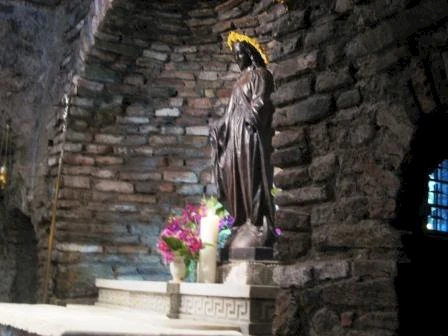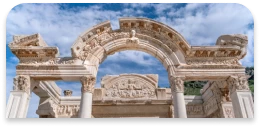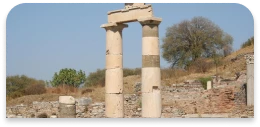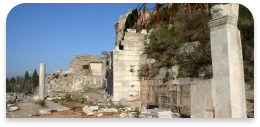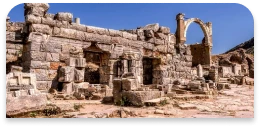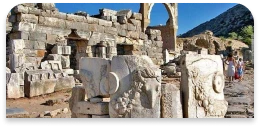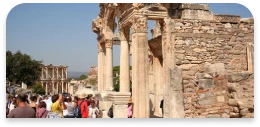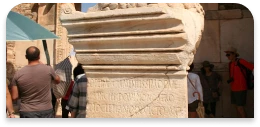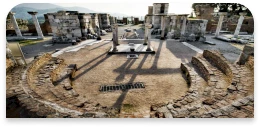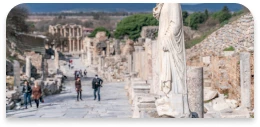Hydrekdocheion
On the southwest corner of the State Agora, there are the remains of a fountain. According to an inscription the magnificent construction of this fountain was ordered by Gaius Laecanius Bassus in 80-82 AD. The facade of this fountain constructed by Bassus, one of the governors of Ephesus, was richly decorated and consisted of two floors that faced the street. The statues of Tritons and Muses (sea creatures and river gods), which were found at the fountain, are now on display at the Ephesus Museum. Because of the enormous size of the fountain, it has been referred to as the "Water Palace".
This fountain is connected to another fountain which is located just opposite it to the west of the State Agora, and also at the same time to a storage cistern. The main section consists of a body in the form of a semicircle and was built in the 2nd century AD. The fountain building aligned with Domitian Lane and the terrace of the Temple of Domitian. The main basin was measuring 12.35 by 8.30 m, which served as a water reservoir, had a U-shaped articulated facade.
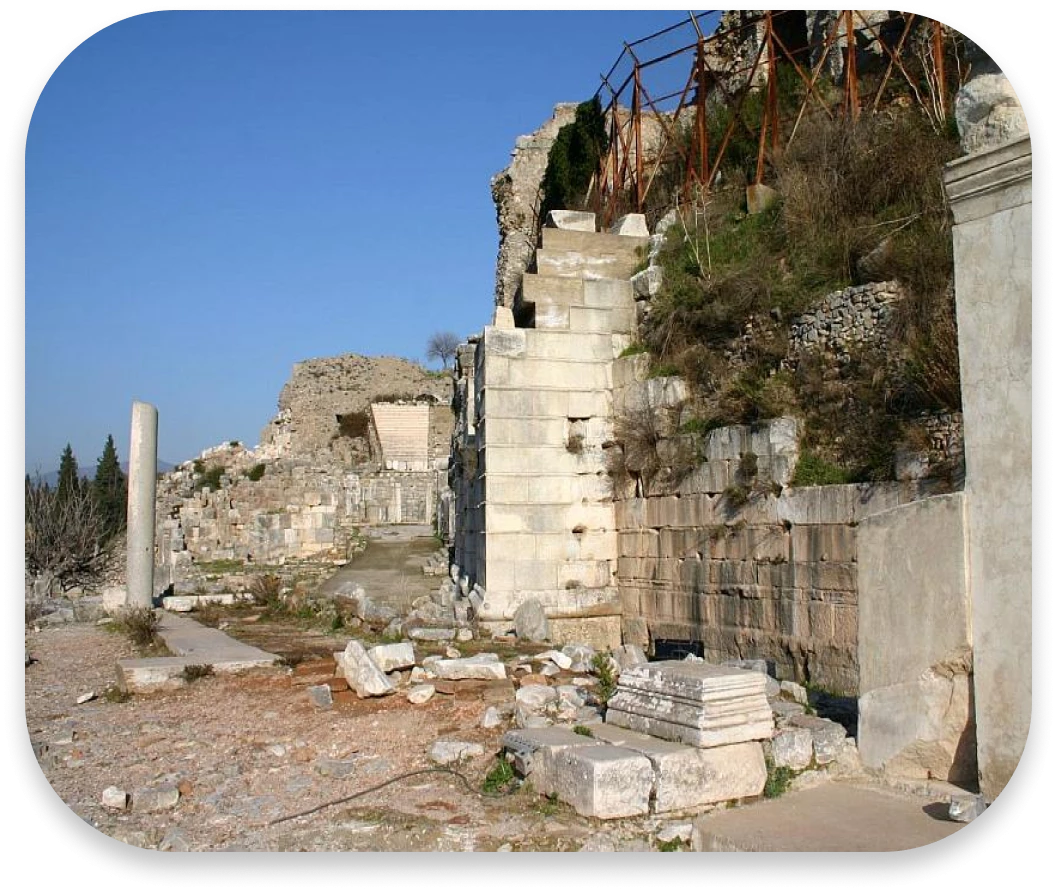
The fountain underwent repairs in the reign of Constans and Constantius II (337-350) when the present wings were added. In inscriptions, this structure is referred to as the Nymphaion. It is the terminal point of the Aqueduct of Sextilius Pollio, which was built during the reign of Augustus between 7 -15 AD. The aqueduct was 3.5 kilometers long, and its remains may still be seen along the Selcuk-Aydin highway. There was a cistern in the upper part of the fountain, and the surroundings of the structure were decorated with statues of the Emperor.
Private Ephesus Tour
%100 satisfaction guarantee
